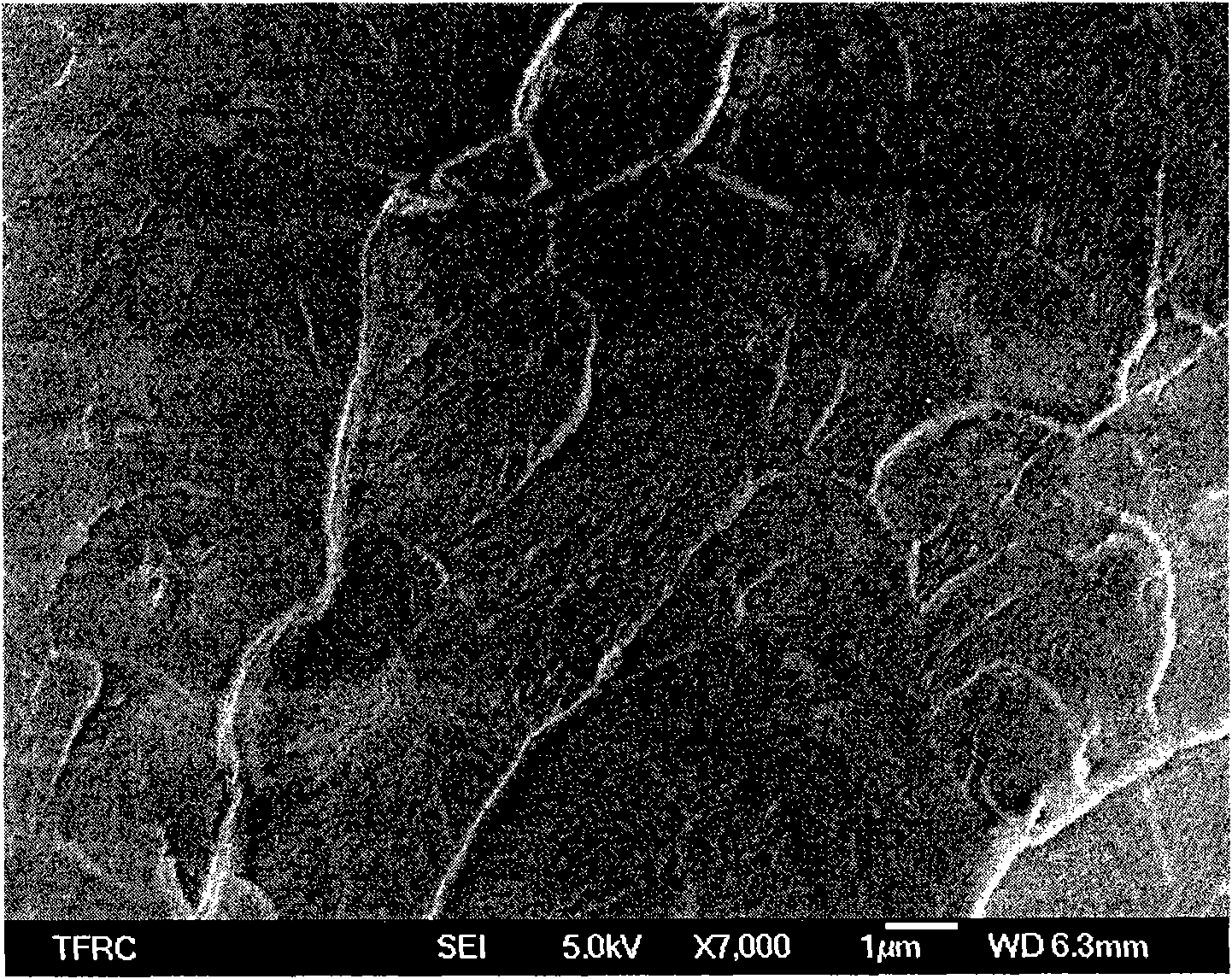Low dielectric-epoxy resin/mesoporous molecular sieve hybrid material and preparation method thereof
A technology of mesoporous molecular sieve and epoxy resin, applied in plastic/resin/wax insulators, organic insulators, etc., can solve the problems of lower dielectric constant, lack of environmental protection in preparation process, and poor comprehensive performance.
- Summary
- Abstract
- Description
- Claims
- Application Information
AI Technical Summary
Problems solved by technology
Method used
Image
Examples
Embodiment 1
[0063] 1. Composite of mesoporous molecular sieve and epoxy resin
[0064] a) Drying of mesoporous molecular sieves: at 250°C, dry 0.50g of MCM-41 for 2 hours under the condition of an absolute vacuum higher than 0.1MPa to exclude moisture and small air molecules in the pores of the molecular sieve;
[0065] b) Pretreatment of epoxy resin prepolymer: put 8.34g of EP-828 in a vacuum oven, heat at 80°C to reduce its viscosity, and then remove air bubbles under the condition that the absolute vacuum degree is higher than 0.1MPa.
[0066] c) Mixing of mesoporous molecular sieve and epoxy resin prepolymer: Mix 8.34g of EP-828 obtained in b) with 0.5g of fully dried MCM-41, and disperse with magnetic stirring at 80°C for 8h, so that the mesoporous molecular sieve Disperse evenly in epoxy resin to obtain EP-828 prepolymer containing MCM-41.
[0067] 2. Curing molding
[0068] Heat and melt 1.16g m-phenylenediamine at 80°C, mix evenly with the EP-828 prepolymer containing MCM-41, an...
Embodiment 2
[0079] According to the same process as in Example 1, 0.3g MCM-41 was vacuum-dried at 250°C for 2 hours; 8.52g of pretreated EP-828 was mixed with 0.3g of dried MCM-41, and then ultrasonicated at 80°C Disperse for 8 hours, then mix evenly with 1.18g of molten m-phenylenediamine, heat cure and form, and obtain 828 type epoxy resin hybrid material containing 3% MCM-41.
[0080] Adopt the method identical with embodiment 1, record glass transition temperature and be: 202.1 ℃; Test frequency range: 100Hz~10MHz, record the dielectric constant of the 828 type epoxy resin hybrid material containing 3%MCM-41 at 100kHz The lower is 4.20, which is 0.13 lower than the dielectric constant of pure 828 epoxy resin.
Embodiment 3
[0082] According to the same process as in Example 1, 0.30g of SBA-15 was vacuum-dried at 250°C for 2 hours; 8.05g of pretreated E-51 was mixed with 0.30g of dried SBA-15, and then dispersed by magnetic stirring at 80°C 8h, and then mixed with molten 1.65g of anhydrous piperazine, heat-cured and molded to obtain a type 51 epoxy resin hybrid material containing 3% SBA-15.
[0083] Using the same method as in Example 1, the recorded glass transition temperature is: 129.7°C; the test frequency range: 100Hz to 10MHz, and the dielectric constant of the 51 type epoxy resin hybrid material containing 3% SBA-15 is recorded at 100kHz The lower is 4.21, which is 0.30 lower than the dielectric constant of pure 51 type epoxy resin.
PUM
| Property | Measurement | Unit |
|---|---|---|
| Glass transition temperature | aaaaa | aaaaa |
| Glass transition temperature | aaaaa | aaaaa |
| Glass transition temperature | aaaaa | aaaaa |
Abstract
Description
Claims
Application Information
 Login to View More
Login to View More - R&D
- Intellectual Property
- Life Sciences
- Materials
- Tech Scout
- Unparalleled Data Quality
- Higher Quality Content
- 60% Fewer Hallucinations
Browse by: Latest US Patents, China's latest patents, Technical Efficacy Thesaurus, Application Domain, Technology Topic, Popular Technical Reports.
© 2025 PatSnap. All rights reserved.Legal|Privacy policy|Modern Slavery Act Transparency Statement|Sitemap|About US| Contact US: help@patsnap.com


